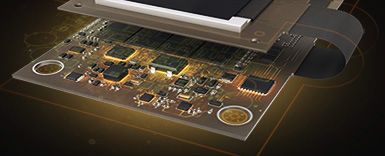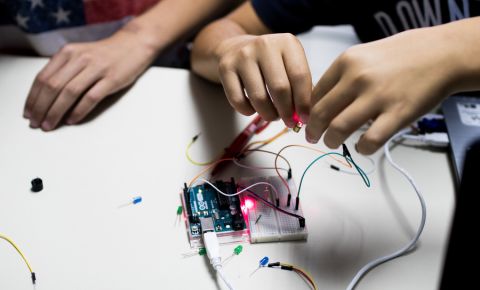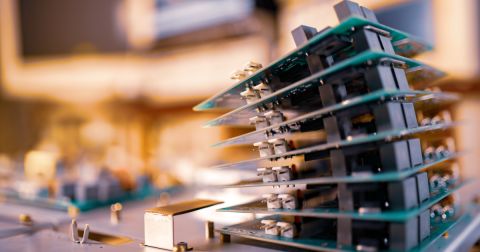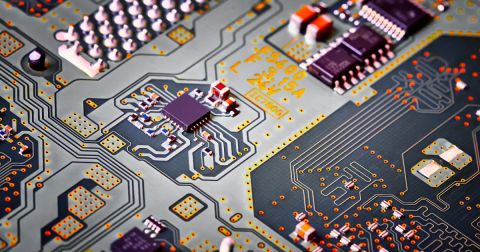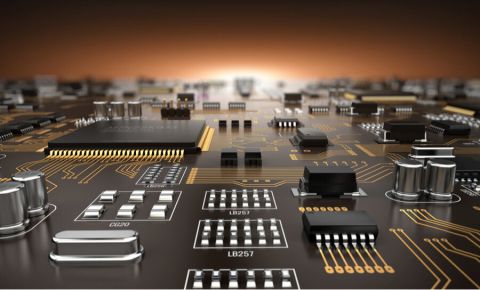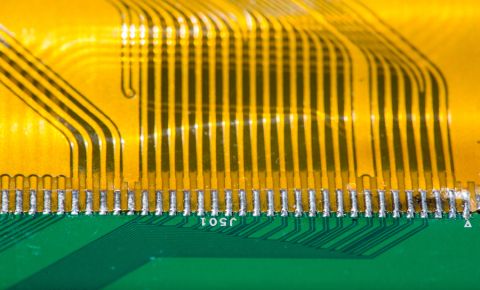My Favorite Altium Keyboard Shortcuts and Viewing Features

When you’re working through a complex PCB layout, it always helps to know the shortcuts you can use to stay productive. Altium keyboard shortcuts, and keyboard + mouse shortcuts, can help you easily walk through your PCB layout during design and as part of final checks during a design review. The other very useful set of features in Altium are the view options, which help you focus on essential structures in the design. Here are some of my favorite keyboard shortcuts and viewing options that help me stay productive, and I hope they can do the same for you.
Keyboard Shortcuts for Viewing Options
I’ll start with some of the basic viewing options needed to quickly scan through a complex PCB layout and how you can access these through the keyboard. When I’m scanning through a layout from one of my engineers, or when I’m trying to follow a long trace through a board, the view options in Altium save me a ton of time and help prevent confusion in a dense layout. Here are the three viewing options I use most often in Altium to stay organized and productive.
Single-layer Mode (Shift + S)
This is probably the quick viewing option I use most as I often need to focus on only a single layer. I like to use this to focus on layout in a single layer and ignore anything that’s going on in all other layers. An example is shown below; you can cycle through these three different views with the Shift + S shortcut key. The left image shows the regular layout with multiple layers visible and the ground plane on the back layer (shown in blue). The middle image omits everything except the plane layer; you can even see the clearance around some vias on the plane layer. The right view focuses on one layer only.

Layer Cycle (Use the * Key and Shift + *)
This is another of my favorite viewing shortcut keys. Pressing the ‘*’ key will cycle through your layers in the PCB layout. You can also cycle through layers in reverse using Shift + *. Note that this will only cycle through signal layers in your stackup; it will not cycle through any of the mechanical layers, plane layers, or component layers. It also will only cycle through the signal layers you have enabled in the View Configuration Panel. I find this very convenient when inspecting a design as it can be used in Single-layer mode. You can then easily scan through different layers while avoiding clutter from multiple traces and polygons.
Net Highlighting (Shift + Hover Cursor Over a Net)
Tracing nets around a complex layout can be difficult, and sometimes you just want to see where a net exists in the PCB layout. Occasionally if I’m presenting to a client, I’ll use this shortcut to point out where a specific net travels across a board, or to show the extent of a complicated polygon in a layout. Hold the shift key and hover the mouse cursor over an element in the layout, and the net for that element will be highlighted.

Keyboard Shortcuts for Placement and Navigation
The view options shown above are the ones I use most frequently, but other function shortcuts help you stay productive. These can operate in the Schematic Editor or PCB Editor.
Menu Shortcuts
There is a lot going on in an Altium window, and it might be challenging to see this, but you can bring up any of the standard menus at the top of an Altium window using the keyboard. If you look at the menu bar at the top of the editor windows, you’ll see that each menu item has an underlined letter. Press this letter to bring up the menu. The menu will open in the editor window just like a right-click menu. You can then hit any of the other underlined letters to execute a function. For example, in the PCB Editor, press ‘P’ and then ‘V’ to execute Place → Via.

Quickly Copy Components in the Schematic
There are two ways to do this without using Copy + Paste. One way is to use Rubber Stamp mode by pressing Ctrl + R in the Schematic editor. When you have a component selected, press Ctrl + R and a copy of the component will appear by your cursor. You can then click somewhere in the schematic to place a copy of the component. You’ll be able to keep clicking copies into the schematic until you hit the Esc key. This function even applies to wires, ports, and other elements in a schematic as shown below.

The other way to quickly copy a component in the schematic is to use Shift + click on a selected component. When you use Shift + click, and you start dragging, a copy of the component will appear by the cursor while you have the mouse button pressed. Once you release the mouse button, a copy of the component will be placed in the schematic.
Show/Hide Ratsnest Connections and Jumpers ("N" in PCB Editor)
When working in the PCB Editor, sometimes the ratsnest of net connections can make it difficult to navigate through a routing strategy. It is possible to temporarily hide the ratsnest of connections in order to clear up the view in the PCB layout. This can be performed on a single component, single net, or for all nets.
To do this inside the PCB Editor, it is a good idea to first ensure no components or other objects are selected; you can clear your selection using Shift + C. Press the "N" key and a small menu will appear, which will allow you to show or hide net connections or jumpers. To hide all nets, select the "Hide Connections" context menu, then select "All". The connections can be made visible using the same hotkey and selecting Show Connections --> All.

Connections can also be shown/hidden for individual components or individual nets. To show/hide all nets connected to a component, select the "On Component" option in the context menu. A green selection cursor will appear; select the desired component and all nets connected to that component will be shown/hidden. You can continue selecting components; to deactivate the selection cursor, press the Escape key.
To hide a single net, select the "Net" option in the context menu. After selecting the "Net" option, you will also see the green selection cursor appear. After clicking on a single pad on a component, the net connected to that pad will be shown/hidden. The selection cursor will also remain active after selecting a pad; you can continue selecting pads to show/hide more nets. Once you are finished, press the Escape key to deactivate the selection cursor.
I love using this when getting ready to route a new layout or when I’m just arranging unrouted components. When components are imported into a blank PCB layout, they are unrouted, and the rat’s nest of nets will appear between components. If nets are very dense, it can be difficult to see everything in the layout as the nets will obscure components and traces.
Polygon Pour Shelving and Repour (T + G Keys)
A lot of the projects I work on need polygons, either because we are using it for power rail routing, for ground (as a plane or as a pour for coplanar lines), or because I need it for a printed RF element. In either case, polygon pours often need to be shelved (temporarily hidden from the PCB layout) or repoured due to some modification or clearance violation. In either case, there is a hotkey for menu access that provides all of these options. I prefer to use the hotkey instead opening the Polygon Pour Manager if all I need to do is shelf, un-shelve, or repour.
To access this menu, hit the "T" key on the keyboard, followed by the "G" key in the PCB Editor. This will bring up a menu offering multiple polygon management options.

From here, there are three convenient options I will use often:
- Use T + G + A will repour all polygons. This is probably my most-used hotkey.
- Use T + G + H to shelve all polygons.
- Use T + G + E to restore all shelved polygons. This may also require use of T + G + A to repour and clear any rules violations.
Other Altium Keyboard Shortcuts I Enjoy
Altium offers dozens of keyboard shortcuts that help you quickly access features that might be buried in the menu bar. If you’re new to Altium, try using some of these keyboard shortcuts when you’re working through your next layout. Altium already supports standard operating system keyboard shortcuts (open file, copy, paste, etc.), but there are additional shortcuts to help you navigate through an Altium schematic or layout with additional efficiency. Here are some of the common shortcuts I use to stay most productive.
|
|
|
|
|
Ctrl + Alt + O |
Access the Open Project Documents dialog for the current project |
Layout or schematic |
|
2 or 3 |
Toggles between 2D view and 3D view |
Layout |
|
0 and 9 |
Rotates the view of the board by 90 degrees clockwise or counter-clockwise |
3D mode only |
|
TAB while routing, length tuning, or placement |
Displays the appropriate interactive editing dialog |
Layout |
|
C |
Brings up the right-click menu from the Projects Panel |
Layout or schematic |
|
Shift + R |
Cycles through three the ignore, avoid, or push obstacle routing modes |
Layout |
|
Shift + E |
Toggles the electrical grid on/off |
Layout |
|
G or Ctrl + G |
Toggle grid snap options |
|
|
L while dragging a component |
Flips component to the other side of the board |
Layout |
|
Ctrl + F |
Flips the board to the other side |
Layout and 3D mode |
|
Spacebar while dragging a component |
Rotates the component by 90 degrees |
Layout or schematic |
|
J followed by C |
Opens the Component Designator dialog. Enter a component designator, and the editor will move the view to that component. | Layout or schematic |
If you want to see how you can be more efficient with your mouse while working in Altium, take a look at this article from Mark Harris. You can also access a complete list of shortcut keys for the most recent version of Altium from the documentation pages.
If you’re ready for a productivity boost in your PCB design software, try the complete set of CAD tools in Altium. The Altium keyboard shortcuts and view options shown here are just a small subset of features that help you stay productive and design with maximum efficiency. We have only scratched the surface of what is possible to do with Altium. You can check the product page for a more in-depth feature description or one of the On-Demand Webinars.




